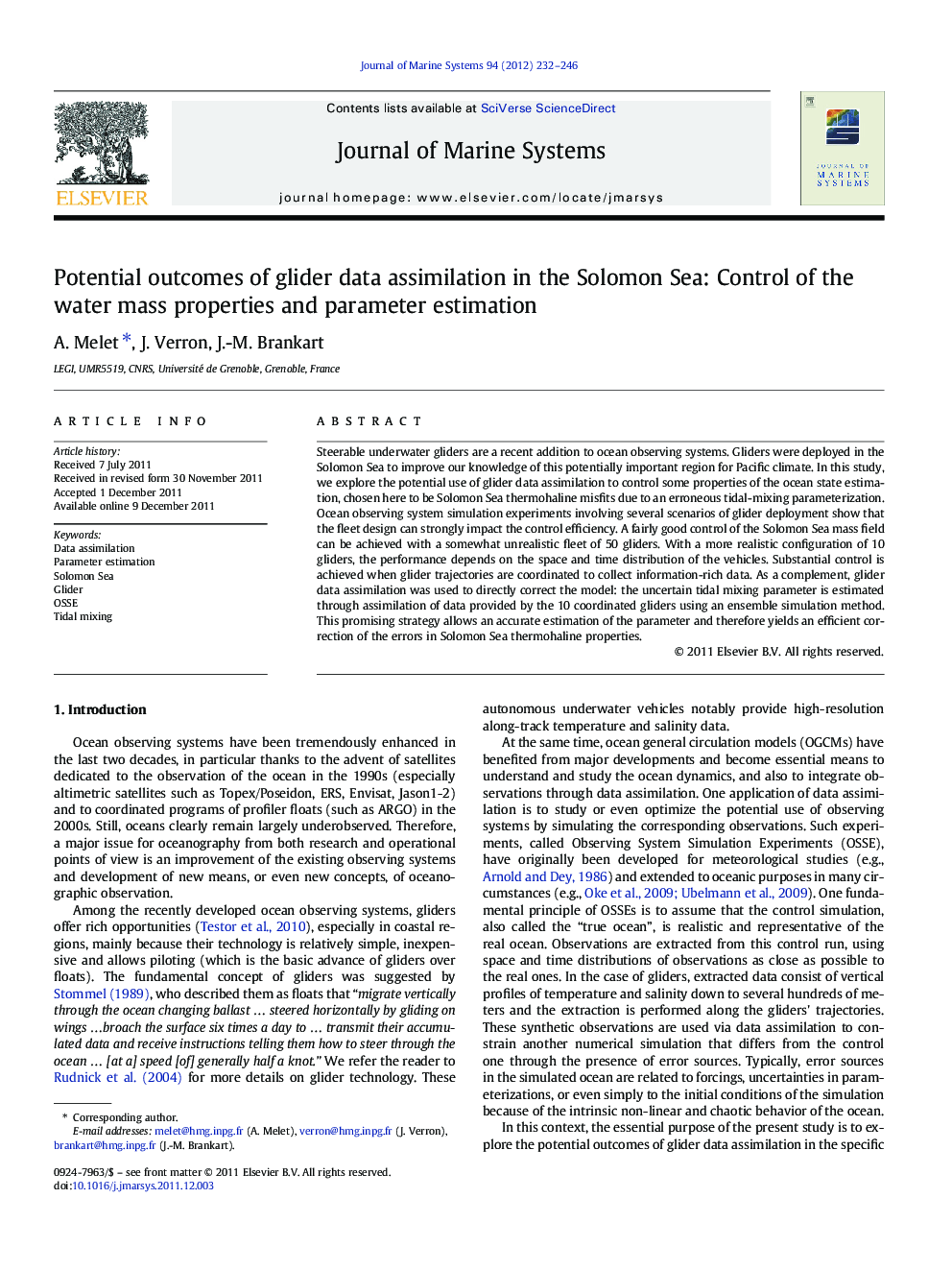| Article ID | Journal | Published Year | Pages | File Type |
|---|---|---|---|---|
| 4548260 | Journal of Marine Systems | 2012 | 15 Pages |
Steerable underwater gliders are a recent addition to ocean observing systems. Gliders were deployed in the Solomon Sea to improve our knowledge of this potentially important region for Pacific climate. In this study, we explore the potential use of glider data assimilation to control some properties of the ocean state estimation, chosen here to be Solomon Sea thermohaline misfits due to an erroneous tidal-mixing parameterization. Ocean observing system simulation experiments involving several scenarios of glider deployment show that the fleet design can strongly impact the control efficiency. A fairly good control of the Solomon Sea mass field can be achieved with a somewhat unrealistic fleet of 50 gliders. With a more realistic configuration of 10 gliders, the performance depends on the space and time distribution of the vehicles. Substantial control is achieved when glider trajectories are coordinated to collect information-rich data. As a complement, glider data assimilation was used to directly correct the model: the uncertain tidal mixing parameter is estimated through assimilation of data provided by the 10 coordinated gliders using an ensemble simulation method. This promising strategy allows an accurate estimation of the parameter and therefore yields an efficient correction of the errors in Solomon Sea thermohaline properties.
